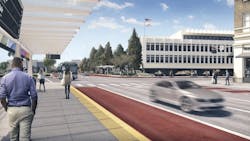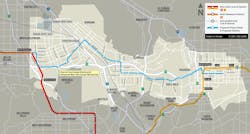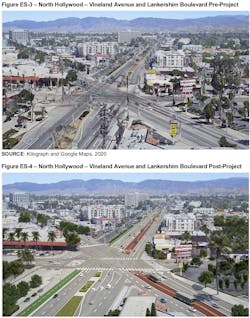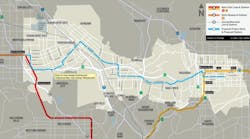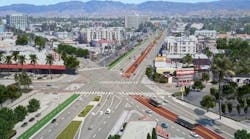L.A. Metro Board approves route, study of North Hollywood to Pasadena BRT
The Los Angeles County Metropolitan Transportation Authority (L.A. Metro) Board of Directors approved the route and final study of the 19-mile North Hollywood to Pasadena Bus Rapid Transit (BRT) Corridor Project.
L.A. Metro says the BRT project represents “one of the missing links” of the transit system and explains the board’s approval of the route and study at the April 28 meeting is “a big step toward getting the project built.” The project has $317 million in funding through Measure M and State Bill 1.
Two segments of the route have brought the most debate, including a 1.3-mile section of Olive Avenue in Burbank where the road would be reconfigured and the number of general traffic lanes reduced from two to one. L.A. Metro says all 299 parking spaces on Olive will be preserved, as would sidewalks, and traffic studies indicate some traffic would move to other major streets with “very few cars” diverting to neighborhood streets “because those streets don’t save time.”
L.A. Metro says it “will continue to work with stakeholders and cities to address issues raised.”

Mischa Wanek-Libman | Group Editorial Director
Mischa Wanek-Libman is director of communications with Transdev North America. She has more than 20 years of experience working in the transportation industry covering construction projects, engineering challenges, transit and rail operations and best practices.
Wanek-Libman has held top editorial positions at freight rail and public transportation business-to-business publications including as editor-in-chief and editorial director of Mass Transit from 2018-2024. She has been recognized for editorial excellence through her individual work, as well as for collaborative content.
She is an active member of the American Public Transportation Association's Marketing and Communications Committee and served 14 years as a Board Observer on the National Railroad Construction and Maintenance Association (NRC) Board of Directors.
She is a graduate of Drake University in Des Moines, Iowa, where she earned a Bachelor of Arts degree in Journalism and Mass Communication.
